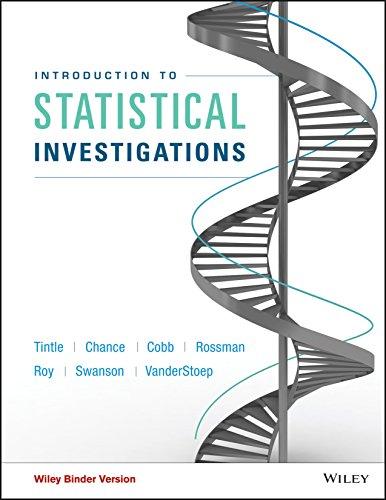A study was conducted to investigate whether how well you know a person is associated with your
Question:
A study was conducted to investigate whether how well you know a person is associated with your ability to detect a lie told by that person. Ten statements were devised about the researcher (e.g., “My toothbrush is blue.”)—five of which were true and five of which were false—but for which no one but the researcher would know the true answer, not even their close friends. The researcher told these statements to 86 participants: some of whom were close friends of the researcher, others acquaintances, and others total strangers. The 10 statements were read by the researcher to the participant. The participant then had to identify whether each statement was true or false. The number of correctly identified questions out of 10 was recorded for each participant. The data are found in the LiarLiar data set.
a. Create dotplots (stacked by relationship groups) for the number of questions correct and find the average number correct for each of the three relationship groups. Do you think any of the averages diff er significantly from others? If so, which one or ones? Explain how you are deciding.
b. Run an ANOVA test to determine whether at least one of the group averages is different. State the null and alternative hypotheses, find the p-value, and tell whether the null hypothesis should be rejected. (Because the study design is complicated the scope of inference is also complicated. You are not expected to discuss the scope of inference for this study.)
c. If your result from part (b) was significant, complete the follow-up analysis by generating confidence intervals for pairwise differences to determine which mean is different from which other(s), how, and by how much. Write a paragraph summarizing your findings.
Step by Step Answer:

Introduction To Statistical Investigations
ISBN: 9781118172148
1st Edition
Authors: Beth L.Chance, George W.Cobb, Allan J.Rossman Nathan Tintle, Todd Swanson Soma Roy





